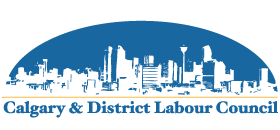Canadian Occupational Health and Safety
The Canadian Occupational Health and Safety Regulations cover you if you work in the following industries:
- Banking
- Marine Shipping
- Ferry and Port Services
- Air transportation, including Airports, Aerodromes and Airlines
- Railway
- Road Transportation that involves crossing Provincial or International Borders
- Canals
- Pipelines
- Tunnels and Bridges (crossing provincial borders)
- Telephone, Telegraph, and Cable Systems
- Radio and Television Broadcasting
- Grain Elevators
- Feed and Seed Mills
- Uranium Mining and Processing
- Businesses dealing with the protection of Fisheries as a Natural Resource
- Many First Nation activities
- Most Federal Crown Corporations
The Alberta Occupational Health and Safety Act covers anyone not working in the industries listed above. Please see the Alberta Occupational Health and Safety Act section if you do not work in the industries listed above.
Definition of Danger
“Danger” includes any existing or potential hazard, condition, or any current or future activity that could reasonably be expected to cause injury or illness to a person.
Two key concepts are:
- “Potential hazard or condition”
AND
- “Any current or future activity”
There has to be a reasonable expectation of an injury or illness before the hazard or condition can be corrected, or the activity altered, or before workers can exercise their right to refuse unsafe work (s.122(1)).
Right to Refuse Dangerous Work
The Canada Occupational Health and Safety Regulations gives employees the right to refuse dangerous work.
Here are some guidelines:
- Report the details of the perceived hazard to your employer right away and tell them that you are exercising your right to refuse work because you believe that the hazard is a danger.
- If your employer agrees that a danger exists, the employer is required to take immediate action to protect you and other employees from the danger and to inform the workplace committee or the health and safety representative about the action(s) taken to resolve the problem.If you have a collective agreement that includes right to refuse language, you have to choose which process to follow before you exercise your right. Once you have chosen, you cannot change your mind unless the employer agrees (s.128 (7)).
You can also refuse to work if you have reasonable cause to believe that the performance of the activity by a worker endangers yourself or another worker (s.128 (1)(c)).
You cannot refuse in certain dangerous circumstances.
Those circumstances include:
- When the refusal to work puts the life, health or safety of another person directly in danger (s.128(2)(a));
- When the danger is a normal condition of employment (s.128(2)(b)).
If There Is No Resolution:
- You may continue the work refusal, reporting the circumstances of the matter without delay to your employer and to the workplace committee or the health and safety representative.
- After being informed of the continued refusal, your employer is required to investigate the matter in your presence and in the presence of either a worker member of the workplace committee, a health and safety representative or, if neither is available, a person from the workplace selected by you.
- If your employer disputes that the situation constitutes a danger, but you have reasonable cause to believe that the danger continues to exist, you may continue the work refusal.
- Upon being notified of your continued refusal, the employer will notify a Health and Safety Officer from Human Resources and Social Development Canada (HRSDC) of the refusal.
- You may then be assigned reasonable alternative work or be asked to remain in a safe location in the workplace.
Once informed of the continued refusal, a Health and Safety Officer will investigate the matter in the presence of all parties. - The Health and Safety Officer will decide if danger exists and provide written notification of the decision to you and your employer.
Appealing a Decision You Disagree With:
An employee who disagrees with the decision of the Health and Safety Officer is not entitled to continue the work refusal, however, he or she will have ten (10) days in which to file a written appeal with an Appeals Officer from The Occupational Health and Safety Tribunal Canada (OHSTC).
An employer, employee or trade union may appeal a Health and Safety Officer’s direction by filing a written appeal with an OHSTC Appeals Officer within thirty (30) days of the initial direction.
Hazardous Materials
Employers have to tell workers about certain hazardous materials they may need to work with. These products are classified, or defined, under the Workplace Hazardous Material Information System (WHMIS).
Compressed gas, flammable and combustible materials, oxidizing materials, poisonous and infectious materials, corrosive materials and dangerously reactive materials each come with a Material Safety Data Sheet (MSDS), which employers make available to workers. These hazardous materials, classified under WHMIS, are stored in containers with a WHMIS warning label.
Employers must give workers training in:
- Reading WHMIS labels so they may be able to identify hazardous materials in the workplace and understand the hazardous effects of these materials
- Getting ahold of the MSDS and reading the data sheet
- Safely using hazardous materials in the workplace
- Storing and disposing of hazardous materials
- Knowing what to do if there is a spill, release, fire or poisoning involving a hazardous material
- Using protective equipment in emergenciesThe information on Health and Safety in the Federal Sector has been gathered from the Public Service Alliance of Canada website and the Alberta Federation of Labour website.
For more information please visit: http://laws-lois.justice.gc.ca/eng/regulations/SOR-86-304/index.html
If you need help filing a Canadian Occupational Health and Safety complaint, please click on the link.
Disclaimer information: http://www.thecdlc.ca/education/help-for-workers/disclaimer/
